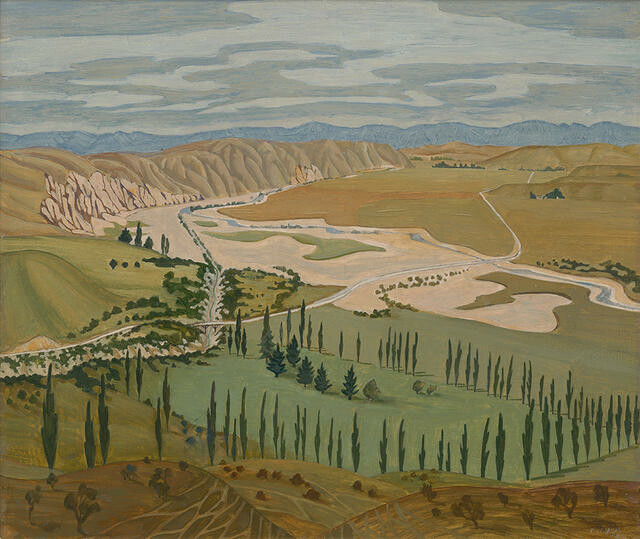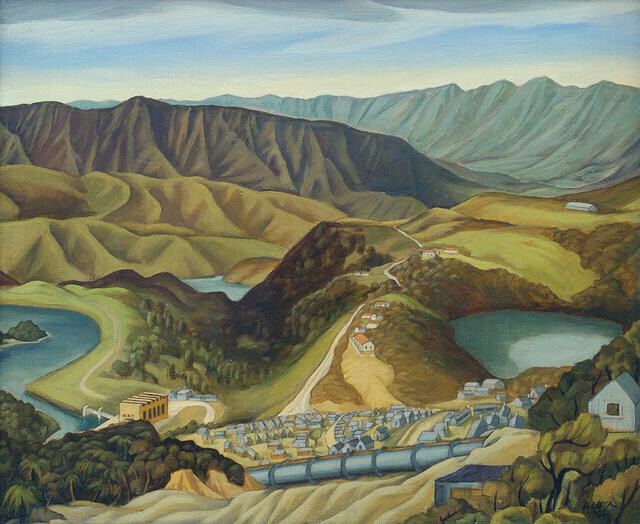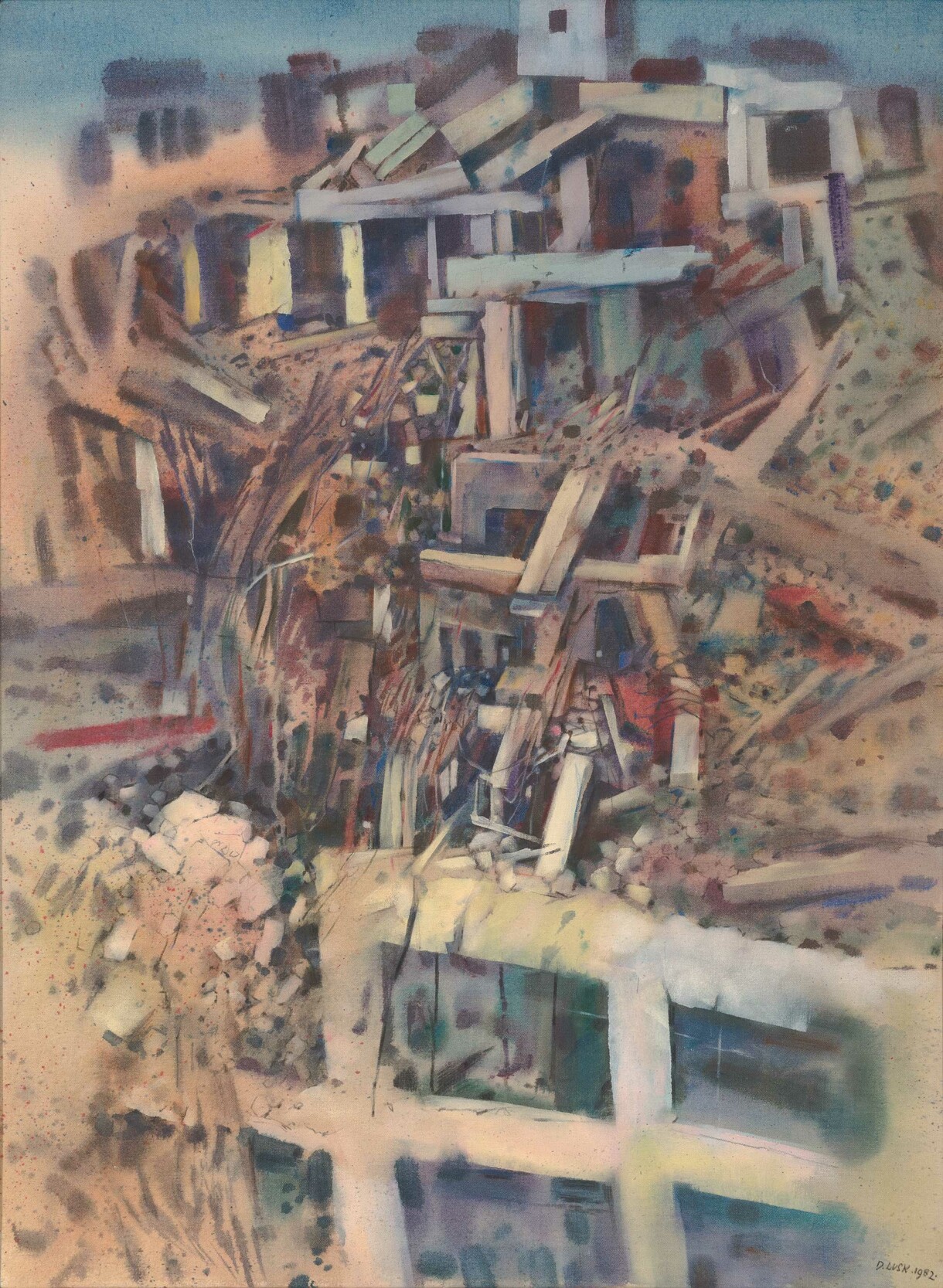Doris Lusk
Aotearoa New Zealand, b.1916, d.1990
Towards Omakau
- 1942
- Oil on board
- William A Sutton bequest, 2000
- 583 x 657mm
- 2000/07
- View on google maps
Tags: clouds, hills, landscapes (representations), natural landscapes, paths, rivers, roads, trees
Painted in 1942, the year Doris Lusk moved to Ōtautahi Christchurch, Towards Omakau is an exhilaratingly expansive view of a landscape near Alexandra, in Central Otago.
The composition accentuates the numerous lines that stretch over its surface, as they curve around eroded cliff faces, and extend in darting tangents as rivers and roads and form regimented verticals in the shelterbelts. Sheep trails crisscross gently rounded hills, echoing clouds that swirl overhead. Reflecting on her practice in later years, Doris stated: “[I] have tried to get to the heart of the matter, involved with the complexity rather than simplicity in describing the nature of our land.”
(Perilous: Unheard Stories from the Collection, 6 August 2022- 21 July 2024)
Exhibition History
[Doris Lusk: Practical Visionary, 4 June – 30 October 2016] (https://christchurchartgallery.org.nz/exhibitions/doris-lusk-practical-visionary)
Through her tutor, Robert N. Field, Lusk discovered the work of Cézanne, who famously stated his desire to represent nature, rather than record it. Lusk readily manipulated reality, describing in a 1987 television interview how her landscapes were “controlled and restricted, composed into pictorial space”. Painted in 1942, the year she married and moved to Christchurch, 'Towards Omakau' is an exhilaratingly expansive view of a landscape near Alexandra, in Central Otago. It’s undeniably modern; a sharp rebuke to those commentators who sought to relegate Lusk to the ranks of pragmatic regionalist.
The composition of this work is designed to accentuate the numerous lines that stretch over its surface, curving around eroded cliff faces, extending in darting tangents as rivers and roads, forming regimented shelterbelt verticals. Sheep trails crisscross gently rounded hills, echoing clouds that swirl overhead. Reflecting on her practice in later years, Lusk stated: “[I] have tried to get to the heart of the matter, involved with the complexity rather than simplicity in describing the nature of our land.”
(Doris Lusk: Practical Visionary, 4 June – 30 October 2016)
Brought to light, November 2009- 22 February 2011
Doris Lusk emerged as a major figure in New Zealand landscape painting during the 1940s. Her work often bears similarities with the Canterbury regionalists in that she favoured painting wide open and unpopulated landscapes. In the paintings ‘Canterbury Plains from Cashmere Hills’ and ‘Towards Omakau, Central Otago’ the high viewpoint taken emphasises the structure of the landscape, a primary concern of Lusk’s. She simplifies the shapes of the hills, the patterns of eroded gullies on hillsides and the rhythmic shapes of trees in the foregrounds of both paintings. She was also compelled by the presence of built structures in the landscape. The formidable powerhouse in ‘Powerhouse, Tuai’ dominates the scene with the people in the foreground dwarfed by the presence of this monumental industrial structure, a feeling further intensified by the lack of a visible horizon.








